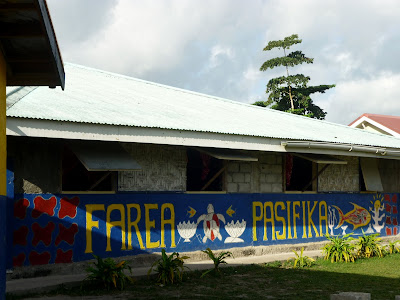This is the chief's office in Mele Village.

The village is largely self-sufficient though some residents own small businesses such as a tour company or a bus. The women are in charge of collecting money to pay for the municipal water and electricity supplies - the men had been responsible for this but no-one knew where the money went and so the women took control!
The women also seemed to be responsible for running a community facility in the school buildings. It was the holidays whilst we were visiting and a church conference had taken up residence for the week.


























